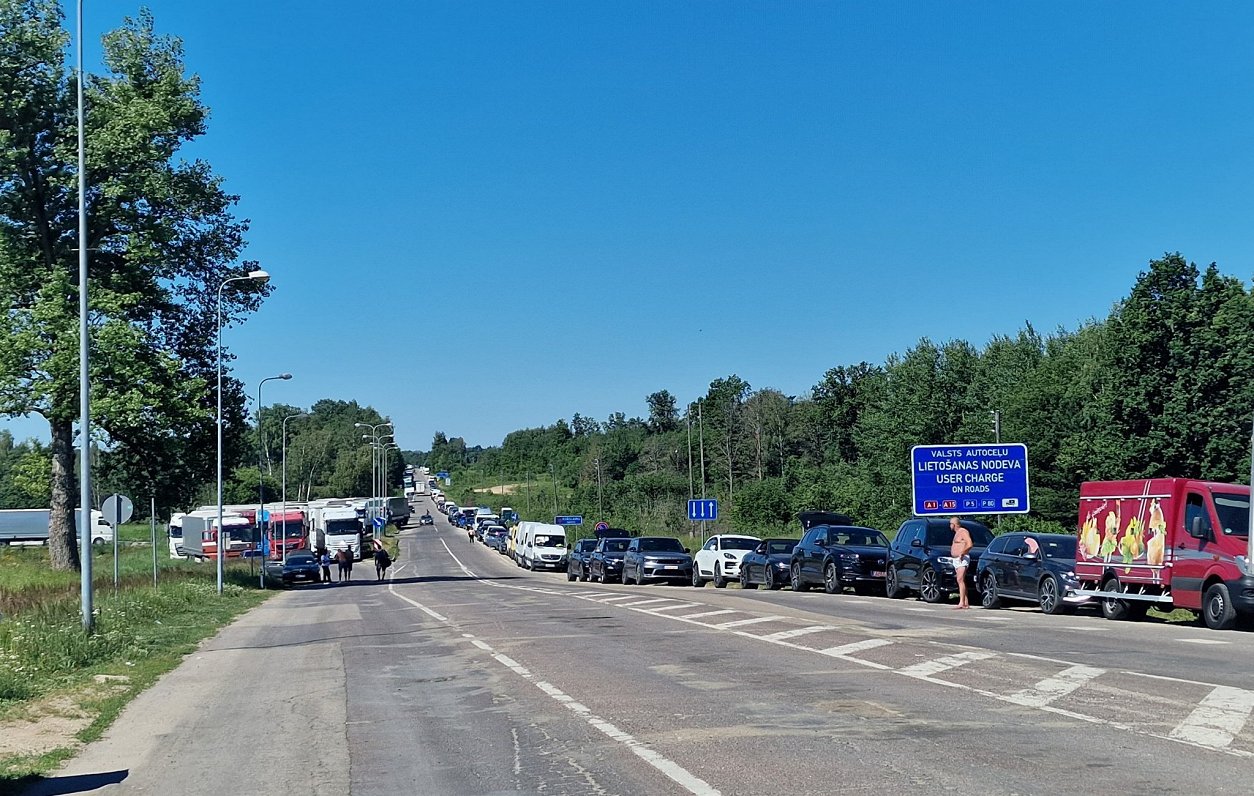Around 400 trucks are queuing at the border and customs control point in Pāternieki, Krāslava region. According to driver Maxim, to get across the border, they have to wait for a week or even longer right there on the spot. "The dry goods [cargoes] sit for weeks. Difficult. There is a live queue. You sign up and wait your turn. I'd like to get through customs faster."
The long queues are due to the closure of several other border and customs control points in Latvia, Lithuania and Poland, as well as to additional checks by customs officers to comply with sanctions. Sometimes it takes several days to check a single car, observed Taivo Hanzens, Deputy Superintendent of the Pāternieki Customs Control Point.
"If it used to be 200 trucks a day, now it is 100. But at 100 there is four times more work than at 200. Of course we have increased the number of staff, but with all the formalities we are clearing less because the work per truck is incomparably more than before," Hanzens said.
In addition, living conditions on site are extremely modest. Abish, who is on his eighth day of queuing to get from Vilnius to Tashkent, says: "There are only two toilets here. One bio-toilet, full to the brim, you can't even go in. No shower, but the weather is hot. We carry water."
Drivers think an electronic queue would be the solution. It would not speed up the work of customs officers, but at least the waiting time could be spent at home. "Like in Estonia - you register in the queue and the car can be parked at home or in the company. Then there would be no vehicles on the road," said driver Genady.
Taivo Hanzens, Deputy Superintendent of the Pāternieki Customs Control Point, also sees value in the electronic queue:
"It won't make it faster, but it will make it more convenient. It wouldn't change anything for us directly, but we feel the atmosphere anyway, and so do the drivers when they've been stationary for a week. Of course, it would make life easier for the people queuing. And it would also improve road safety, because it is dangerous for them to be there, especially in the dark, especially in winter."
The long queues and the resulting congestion also cause headaches for the local municipality.
"Public transport, how to get the school buses out, the harvest is about to start. In winter there is public transport, the bus could not get past. We changed the routes. I am worried about the street, because we do not have a bypass in Krāslava, and in this heat the asphalt will have problems," said Gunārs Upenieks, chairman of the Krāslava district council, from the Latvian Farmers' Union.
In neighboring countries, the queues at the border are not so long because of the electronic application system.
Although political promises have been made on several occasions to set up a similar system in Latvia, no real action has yet been taken.
Now the Ministry of Transport has taken over the reins, promising to finally set up an electronic queue by the end of the year.
"By the end of the year, we plan to have that queue in place. Electronic application for border crossing, queue organization as an e-service provided by the Road Transport Directorate," said Annija Novikova, Director of the Public Transport Services Department at the Ministry.
The electronic application system project has been put into operation thanks to the current availability of European Union funding.
"We have ambitions to make this project much more comprehensive in the interests of national security, where there would be both a communication infrastructure and smart border information would be collected on various things - not only on vehicles but also on persons crossing the border. There are several phases and activities foreseen."
The total cost of the project is expected to be around €8 million. At the Latvian level, the idea is conceptually supported, but the project still needs to be prepared and assessed by the European Commission, and only then will it be known whether the money will be granted and the project for an electronic application system for the eastern border will get the green light for implementation.




























